FORT WORTH, Texas — Kyle Busch obviously had no problem with tires in winning at Auto Club Speedway two weeks ago.
So he’s not worried that NASCAR will continue to not mandate left-side tire pressures even at tracks where Sprint Cup teams could be in danger of abusing their tires with low air pressures.
MORE: Drivers fear more tire problems; picks | 12 teams get practice penalty | Weird Texas schedule | Parity rules
NASCAR mandates air pressure for the right front tires (51 psi for this weekend at Texas Motor Speedway) but not the left front, where the recommended air pressure is 23 psi.
“It’s been more exciting, the racing we’ve had, with the rules being loosened up this year. So why do we need to add more rules to tighten it back up again?” Busch said. “I am against it. It was an exciting race.
“In California, there were people that abused the left-side air pressure. You saw them take off and have way more speed than others. Guys like myself that didn’t abuse that left-side air pressure were able to still salvage on and didn’t have problems with tires whatsoever. Ultimately we won the race.”
MORE: Best NASCAR trophies
Goodyear is bringing the same left-side tire compound the teams have used at Texas since 2011. But the right-side compound is new with the multi-zone technology, where the outside 10 inches of tread is designed for more grip but the inside two inches is designed for more durability.
“I don’t think anybody wants (mandated pressures), but they mandate the right front — it’s already being done,” said Stewart-Haas Racing competition director Greg Zipadelli, whose team had a few problems earlier this year at Las Vegas. “Left sides could potentially be an issue here.
“Our conversation with Goodyear (is) it’s hard to go up in air and give up that grip if other people aren’t. There’s speed there. But if everybody has to be 16, 18, 22 pounds, whatever it is, then everybody is giving up the same thing, they’re kind of working in the same boat.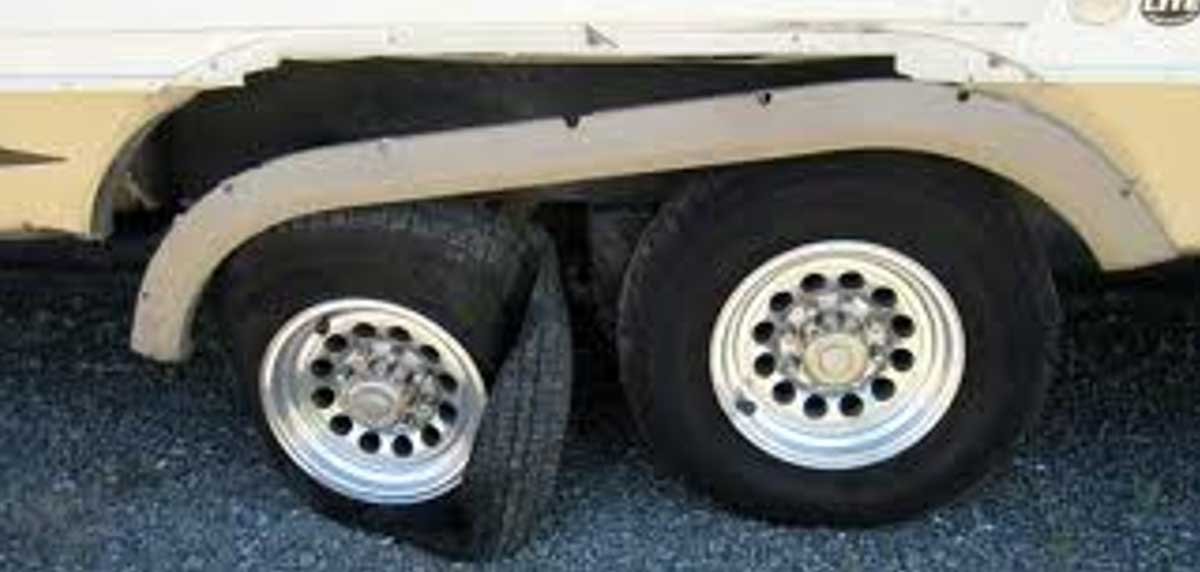 ”
”
That’s not going to happen, and teams will have to decide just how low on air pressure they want to go. Texas is different than California in that the track is less bumpy and teams won’t use the apron as much as they did two weeks ago. Without the abuse on a tire going from the transition of the apron to the banking, that should help keep the sidewalls of the tires from buckling as they did at California.
“I’m up for leaving it in the team’s hands,” said Richard Petty Motorsports competition director Sammy Johns, whose organization also had problems at California. “We have enough engineers and stuff like that, if you get yourself in a danger zone, that’s your own fault.”
Goodyear and NASCAR officials met with the media Friday, saying they wanted to talk about the zone-tread technology and not necessarily to get in front of a story of potential tire problems.
The Cup teams are allotted five sets of tires for practice and qualifying and then 11 sets for the race. Goodyear and NASCAR could allot additional sets if there are problems, but they didn’t do so two weeks ago at California.
Goodyear and NASCAR could allot additional sets if there are problems, but they didn’t do so two weeks ago at California.
“I'm proud of (the teams) to push the limits like that,” NASCAR Vice President of Competition Robin Pemberton said. “But they also know they have to finish races. They know better than we do.
“We're just the governing body. They're the competitors. They've got a lot on the line. They're the best at pushing it to the limit. They'll adjust accordingly.”
Goodyear officials didn’t express concern for this weekend.
“We feel very good about going into this weekend,” Goodyear’s NASCAR manager Greg Stucker said. “Very similar to Atlanta (last year), they're known quantities. In fact, the harder compound of this tire is the same as we raced in Atlanta last year.
“The outboard compound is the same that we raced in both races here at Texas. … Based on the results we saw yesterday, two Nationwide practices, we feel very good. We have a lot of confidence going into this weekend. ”
”
Joey Logano is concerned just based on California and his struggles there, along with the struggles of teammate Brad Keselowski.
"This is the first faster race track we’ve gone to since then and you’re gonna have a concern," Logano said. "It would be kind of dumb if you didn’t have a concern coming into this. We’ll see how this practice goes here in a few hours and see what it looks like.
"There are different ways we can dial it back, whether it’s behind the wheel or in the garage here when we’re setting them up.”
The California tires were fairly known quantities, too, having been the same as they were in 2013.
“If we see there’s a problem and it’s something that we’re doing, whether it’s speed or not, you still have to finish the race to be able to win it,” Matt Kenseth said. “So you have to be able to adjust to that if there is something you can do to control that.
“So it seemed like there was some problems there that maybe could have been avoided.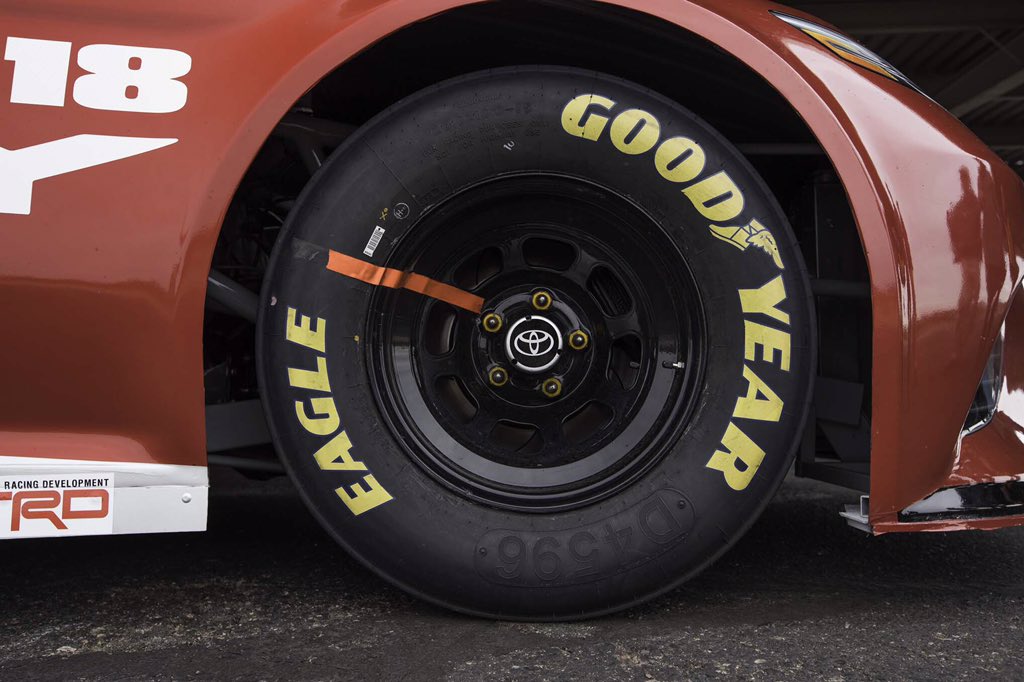 ”
”
Even if drivers have problems, at least some of the competitors see that as part of racing.
“I think you need more tortoise-and-the-hare stories in racing,” Busch said. “That is where the excitement is going to come from.
“It’s not just going to come from everybody being the same speed all the time running around in a train. It’s going to come from guys that are faster in different opportunities, different stages of the race, comers and goers.”
NASCAR cars differ from road cars in many aspects and therefore require different components. NASCAR uses nitrogen in tires instead of air for a few reasons, and since we use air for our tires in road cars, we may find it strange that NASCAR uses nitrogen in tires.
NASCAR uses nitrogen in tires instead of air because it is more stable. While pressure builds in NASCAR tires as they heat up, it does so to a lesser degree with nitrogen. If the tires become overinflated, they may severely damage many components of the car, further explaining the use of nitrogen.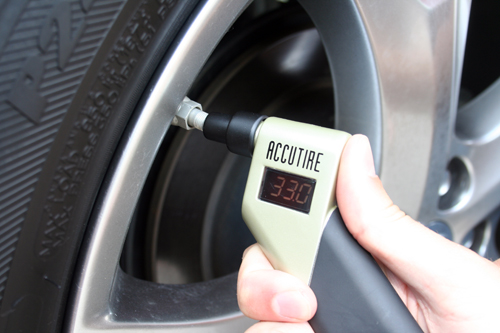
Below, we will reveal in detail why NASCAR uses nitrogen in tires instead of air. We will also explore how much tire pressure builds in NASCAR cars throughout a race’s duration, and whether we believe it is best for road car tires to use nitrogen instead of normal air.
Table of Contents
Does NASCAR Use Nitrogen In The Cars’ Tires?NASCAR uses nitrogen in the cars’ tires because it is more stable at higher pressures. Racecar tires are put under a lot of stress, and using nitrogen decreases the risk of overinflated tires. Also, nitrogen has less of an impact on tire wear and tear, which is essential during a 300-500 mile race.
Previous generations of NASCAR cars differed dramatically from their production counterparts. Even in the age of the Next Gen car, which claims to at least resemble their showroom equivalents, they still vary substantially.
One variance you can’t help but notice includes the tires.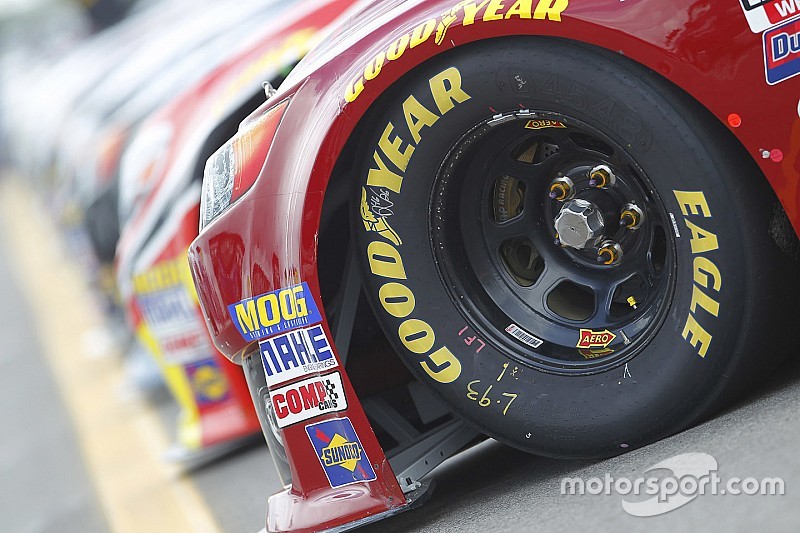 Just one glance and you will see that NASCAR’s Goodyear Eagles lack tread, they wear down faster than production line tires, and NASCAR teams do not fill them with air.
Just one glance and you will see that NASCAR’s Goodyear Eagles lack tread, they wear down faster than production line tires, and NASCAR teams do not fill them with air.
If you think back to high school, you may remember taking a class called physical science. Physical science, in short, studied non-living things, like gasses, mass, and chemical compounds, unlike its biological and Earth science counterparts. NASCAR falls into the physical science category.
Think of NASCAR as one massive physical science experiment. From fuel calculations to aerodynamics, engine building, and even gases used to fill tires, physical science enjoys a dominant presence in NASCAR.
Instead of using air, NASCAR teams opt to fill their tires with nitrogen. This is because nitrogen expands and contracts more consistently, unlike air. And since track and tire conditions vary throughout a 300 to 500-mile race, nitrogen makes for a better option.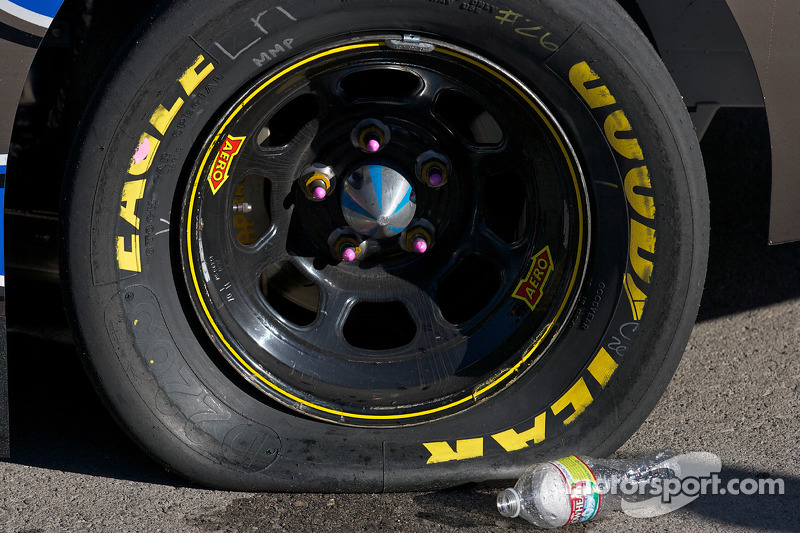
Air’s moisture varies depending on the humidity. This moisture causes inconsistent expansion and contraction. Given the location of most NASCAR races in the southern and southwestern United States during the spring, summer, and early fall, nitrogen’s consistency is more logical.
As the already hot track surfaces heat up, and as the tires heat up as the drivers go round the track, if NASCAR teams opted for air over nitrogen, they are putting their cars at risk of an unnecessarily high pressure. Nitrogen neutralizes this risk by a substantial margin.
Key Points
NASCAR cars use nitrogen in their tires for safety reasons
Nitrogen limits the pressure variations within the tires
This is vital as NASCAR tires are put under immense stress during a race
RELATED ARTICLE What Tires Do NASCAR Cars Use?
Why Do Racecars Use Nitrogen In Their Tires?Racecars use nitrogen in their tires because the nitrogen they use is ‘dry’ and so is free from moisture unlike air.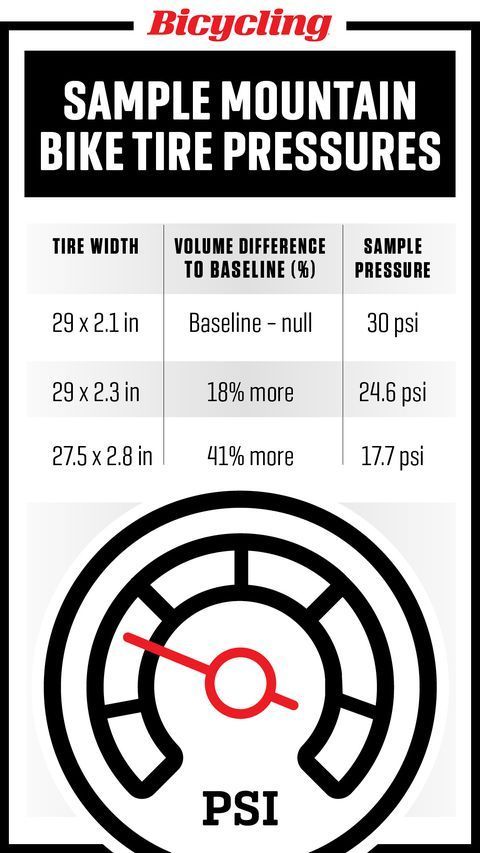 This means there are smaller tire pressure variations as the tires change in temperature, and so this consistency makes the tires safer and more consistent in terms of their pressure.
This means there are smaller tire pressure variations as the tires change in temperature, and so this consistency makes the tires safer and more consistent in terms of their pressure.
NASCAR always has a motive behind why they do things a certain way, even if it looks strange to onlookers. For example, you won’t find an air conditioner inside NASCAR cars. Nor do they contain speedometers, or fuel gauges. Sounds odd to us, but perfectly logical to NASCAR.
NASCAR teams also attach spoilers to their cars, they bump draft often instead of outright passing opponents, and their cars further contain no rear or side view mirrors. Though they do have rearview cameras.
Much of the above components are necessary for safety. If NASCAR allowed their drivers to use air conditioning, for example, odds are they would spend green flag laps fiddling with the unit, which would take their focus off the racing. Drivers would also continually check their speedometers and fuel gauges, which further affects focus.
While nitrogen-filled tires are safer for NASCAR cars than air-filled ones, they are also far more logical to use. In NASCAR, teams want to maximize more than just speed to win a race. And by choosing nitrogen over air, they can do just that.
Since air can cause drastic fluctuations in tire pressure, it could impact fuel economy and tire wear. When drivers travel at high speeds throughout a NASCAR race, their cars are even more prone to these fluctuations depending on the track conditions.
Air-filled tires would force drivers to pit more often while nitrogen-filled tires help keep the car performing at peak capacity. Since all NASCAR teams do this, however, it does not give anyone a true competitive advantage. However, using nitrogen tires is easier on a NASCAR team’s budget.
Fun Fact
NASCAR teams can spend up to $20,000 on tires for each race
Do the math, and that’s $720,000 per season with 36 points-paying events.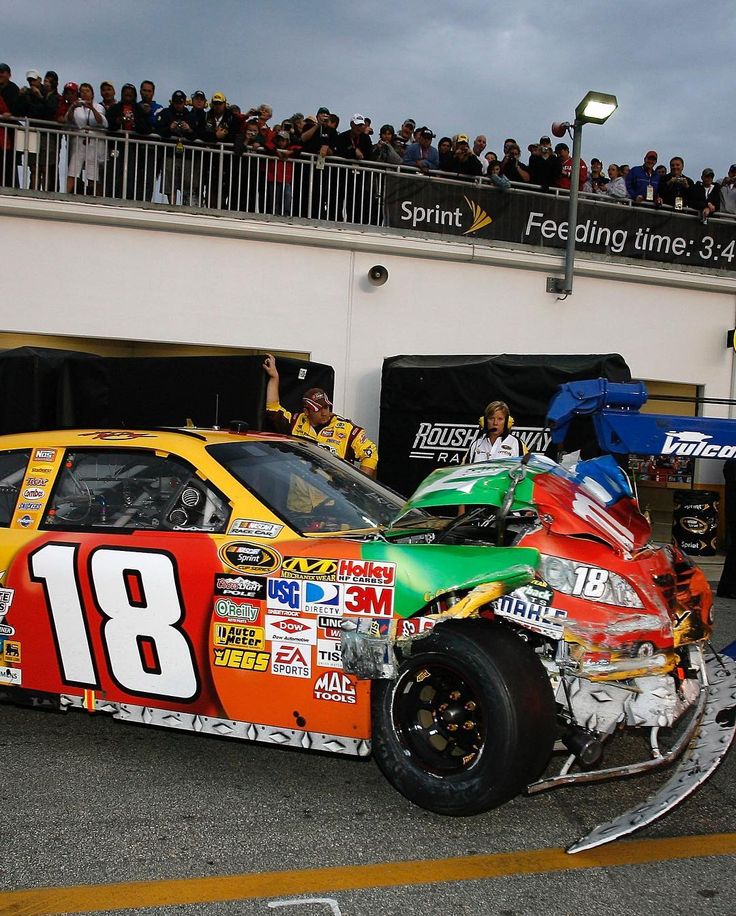 With NASCAR looking for ways to keep costs down for its teams, it makes sense to use nitrogen over air if it means prolonging vehicle components. This doesn’t just include saving tires. Since tire pressure remains consistent with nitrogen instead of air, the car’s handling is also better.
With NASCAR looking for ways to keep costs down for its teams, it makes sense to use nitrogen over air if it means prolonging vehicle components. This doesn’t just include saving tires. Since tire pressure remains consistent with nitrogen instead of air, the car’s handling is also better.
This helps save brakes, decrease the risk of engine overheating, and prevent tire failures. Even with big-time sponsors, it still costs NASCAR teams millions each season to run 10 months’ worth of races, meaning anywhere they can save money, they will.
Key Points
Many racing series use nitrogen in their tires
Dry nitrogen is devoid of moisture, which helps minimize pressure variations
Using nitrogen in the tires helps NASCAR teams save money in the long run through decreased wear and tear
RELATED ARTICLE Why Do NASCAR Teams Scrape Tires? (Full Explanation)
What Pressure Are NASCAR Tires?NASCAR minimum tire pressures are around 20 psi for the left front, 22 psi for the left rear, 50 psi for the right front and 46 psi for the right rear.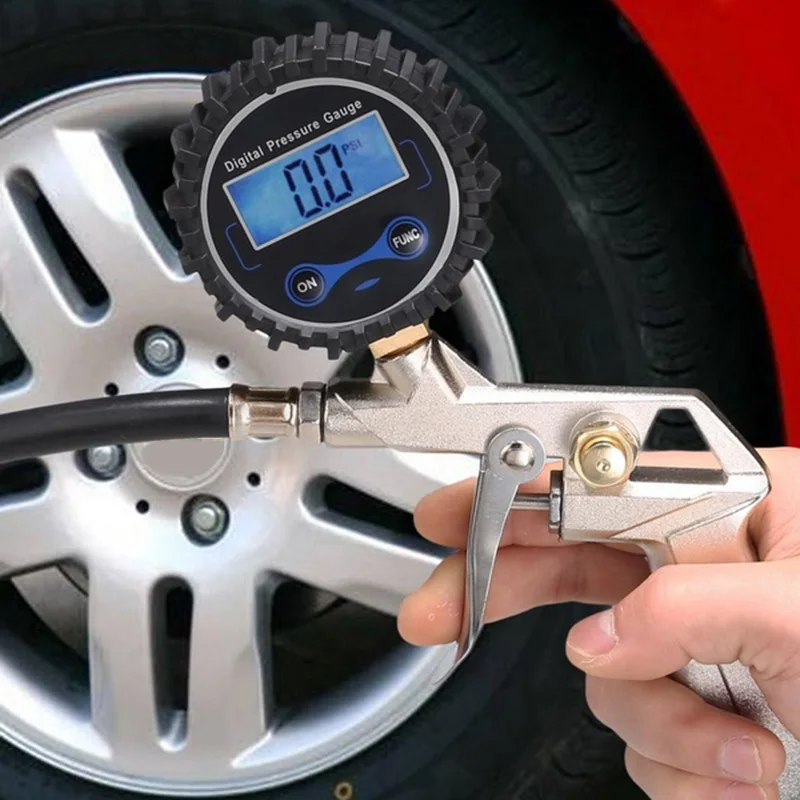 The pressure of NASCAR tires varies from race to race, with the track surface and layout being considered along with the track conditions and temperature.
The pressure of NASCAR tires varies from race to race, with the track surface and layout being considered along with the track conditions and temperature.
Depending on where you live, you either embrace cold weather or dread it. But cold weather affects tires in the same way: It often lowers tire pressure. These days, your car probably lets you know when one of your tires has less-than-ideal pressure.
Even with your dashboard telling you when a tire is low on psi, tire experts tell you to measure your tires with a tire gauge before driving when the weather dips below 32 degrees Fahrenheit. This is because when the temperature drops, tire pressure drops.
Let’s shift gears to the NASCAR track, where the tires are typically hot. The temperature of your road car’s tires can reach 160-degrees Fahrenheit. But, since NASCAR cars are whipping around the track at 180 miles per hour or faster, they get even hotter, often between 230 and 240 degrees Fahrenheit (110-115 degrees Celsius).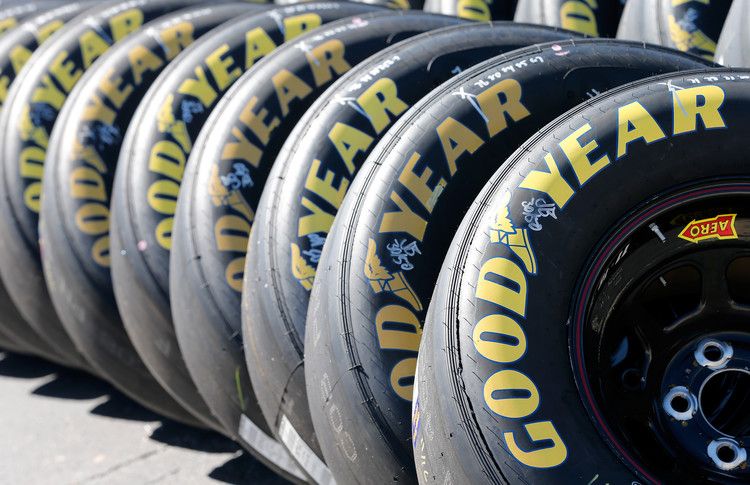
Air molecules move fast, and they are always moving. When these fast-moving molecules move within a tire, that’s what causes tire pressure. They push outward when they hit the inside of the tire. As the tires heat up, both through the track heating up and the driver warming the tires just by driving, the molecules move faster, and the pressure increases.
At intermediate tracks like Homestead, the right front tires can build up to 70 psi. However, the right front tire begins at just 47 psi, as 23 pounds of buildup occurs throughout the race.
Key Points
NASCAR tire pressures vary by tire and by track
As temperature increases, so does pressure
NASCAR tires can increase in pressure by up to 23 pounds per square inch (psi) over the course of a race
RELATED ARTICLE How To Become A NASCAR Driver (Ultimate Guide)
Should You Use Nitrogen In Your Road Car’s Tires?You can use nitrogen in your road car’s tires, but it’s not necessary.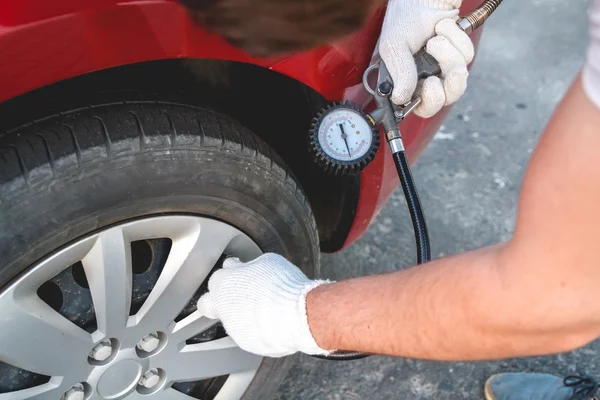 It won’t hurt your car’s tires, but it is not essential. If you used nitrogen in favor of air, your tires will benefit from slightly steadier pressures and you won’t see such low pressure in the winter months.
It won’t hurt your car’s tires, but it is not essential. If you used nitrogen in favor of air, your tires will benefit from slightly steadier pressures and you won’t see such low pressure in the winter months.
So, if you live somewhere that winter likes to hang around for a while, it may be worth it. But you always need to remember that nitrogen does not always make a difference. Suppose you lose tire pressure through leaks or punctures; nitrogen will not save your tires any better than air in these cases.
Even if you chose to drive your road car with nitrogen-filled tires, tire experts agree that you should still check the pressure regularly even if your dashboard does not inform you of major fluctuations in tire pressure. They also tell you to never drive with under or overinflated tires.
While doing so seemingly does not hurt your tires, if you decide to pull out of your neighborhood and hit the road, you risk putting unnecessary pressure on them.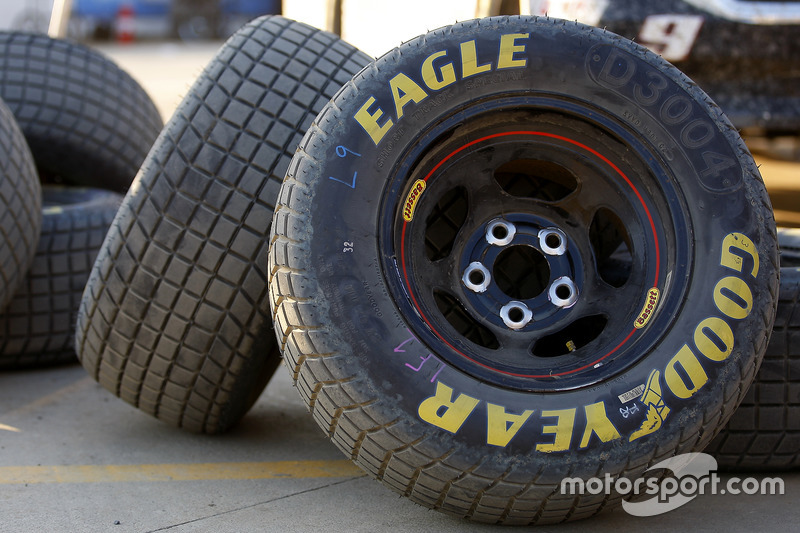 You can cause rapid heat buildup and strain, which can lead to tire failure. So, keep your tires at optimal pressure.
You can cause rapid heat buildup and strain, which can lead to tire failure. So, keep your tires at optimal pressure.
The best way to know if your tires are under the correct psi is to invest in a tire gauge. And whether you decide to fill your tires with nitrogen or air, be sure to check your owner’s manual if you have special inquiries regarding the care of your tires.
RELATED ARTICLE Where Is NASCAR Most Popular? (The Numbers)
Final ThoughtsNASCAR teams use nitrogen because it’s not as volatile as air. This keeps tire pressures more consistent as the tire temperatures increase over the course of a race. If NASCAR cars used air instead of nitrogen, tire pressure could fluctuate more and cause problems for the cars.
1. Tire and tire pressure recommendations
2. Pressure unit correspondence table
3. Why are deviations in tire pressure dangerous?
Why are deviations in tire pressure dangerous?
- Risks of insufficient tire pressure
- Risks of high tire pressure
4. How does tire pressure affect driving comfort and safety?
- Strengthening due to pressure
- Tire pressure for driving on the highway
- Off-road pressure
- Pressure and fuel economy
5. How does tire pressure depend on the season?
- Winter tire pressure
- Tire pressure in summer
6. How to check tire pressure?
7. How often should blood pressure be measured?
Headed out on the road? Check tire pressure. Permanent advice, which, alas, is often forgotten. In the meantime, properly inflated tires make driving comfortable, driving safer, and tire life longer. What should be the pressure? What are the dangers of over-inflated or under-inflated tires? We have collected answers to all questions, as well as useful tips, in one article. Everything written below will help you not only make your trip safe, but also save your budget. How? Read and level up.
In the meantime, properly inflated tires make driving comfortable, driving safer, and tire life longer. What should be the pressure? What are the dangers of over-inflated or under-inflated tires? We have collected answers to all questions, as well as useful tips, in one article. Everything written below will help you not only make your trip safe, but also save your budget. How? Read and level up.
What should be the pressure?
Recommendations of car and tire manufacturers
So, let's start with the banal. Each car manufacturer has standards and recommendations for the level of inflation pressure in tires. It's always best to stick with them. You can find the numbers you need:
* In the vehicle owner's manual
* On a special sticker inside the car (usually on the car door, B-pillar or gas cap)
* In the form of a QR code (relevant for the latest models, especially premium ones; the sticker with the code is located in the same places)
These cheat sheets contain all the information you need.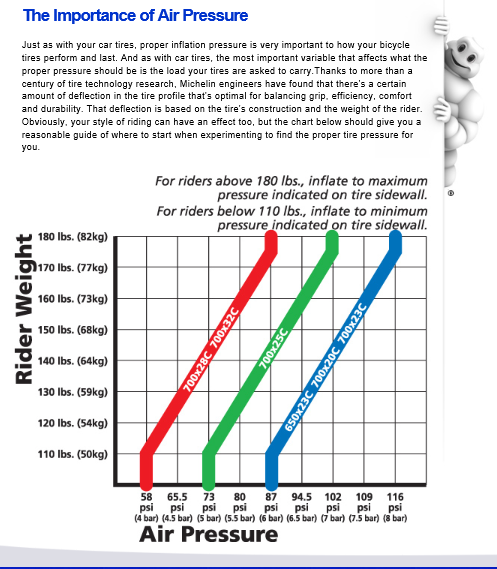 The manufacturer stipulates not only the optimal level of internal tire pressure, but also the limits to which it can be increased or decreased relative to the norm. The amount of pressure depends on the size of the tires, on some cars the recommended pressure for the rear and front wheels differs. To summarize, for most passenger cars, the recommended constant tire pressure ranges from 2-2.5 atmospheres. This is the norm not only for a comfortable and safe ride, but also for fuel economy.
The manufacturer stipulates not only the optimal level of internal tire pressure, but also the limits to which it can be increased or decreased relative to the norm. The amount of pressure depends on the size of the tires, on some cars the recommended pressure for the rear and front wheels differs. To summarize, for most passenger cars, the recommended constant tire pressure ranges from 2-2.5 atmospheres. This is the norm not only for a comfortable and safe ride, but also for fuel economy.
Tire manufacturers also indicate pressure on the label. But there is an important point here! The number on the sidewall of the tire is not the norm to strive for, but an indicator of the maximum pressure that the tire can withstand and not burst.
Correspondence table for pressure measurements
Tire pressure is measured in two units: atmospheres (or bars) and psi. Bars are the most common, it is in them that the pressure is measured in gauges in tire shops and gas stations.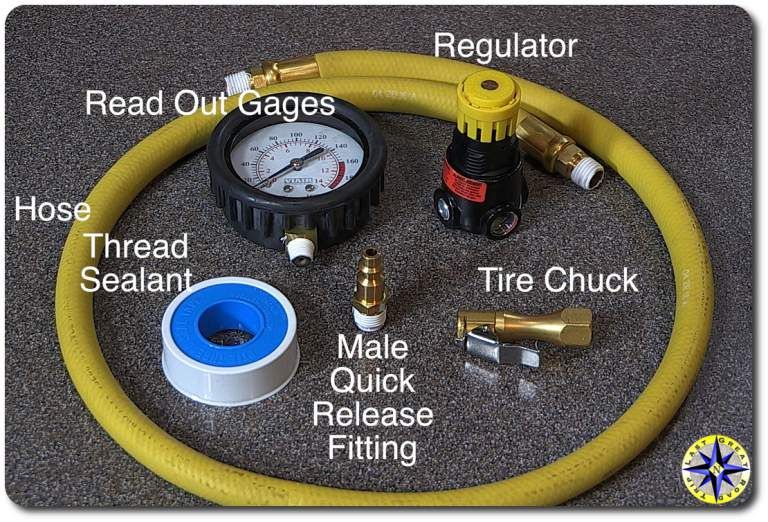 However, in some countries it is psi that is used - pounds per square inch. To avoid confusion, it is worth remembering that one psi corresponds to 0.068 bars.
However, in some countries it is psi that is used - pounds per square inch. To avoid confusion, it is worth remembering that one psi corresponds to 0.068 bars.
Why are deviations in tire pressure dangerous?
Tire pressure affects how long tires last and how quickly they wear out. And not only. If the tires are over-inflated or, conversely, under-inflated, then their critical properties such as traction, vehicle directional stability when driving, handling (especially when cornering and on uneven surfaces), braking distance and resistance to aquaplaning will change.
Why is this happening? To answer this question, elementary knowledge of physics is enough. With the right gas pressure from the inside to the tire, the tire retains exactly the shape that was intended by the manufacturer. The contact patch of the tire with the road is also optimal, because the tread at optimal pressure also retains its shape and the necessary degree of flatness so that its pattern moves along the surface as it should (see figure).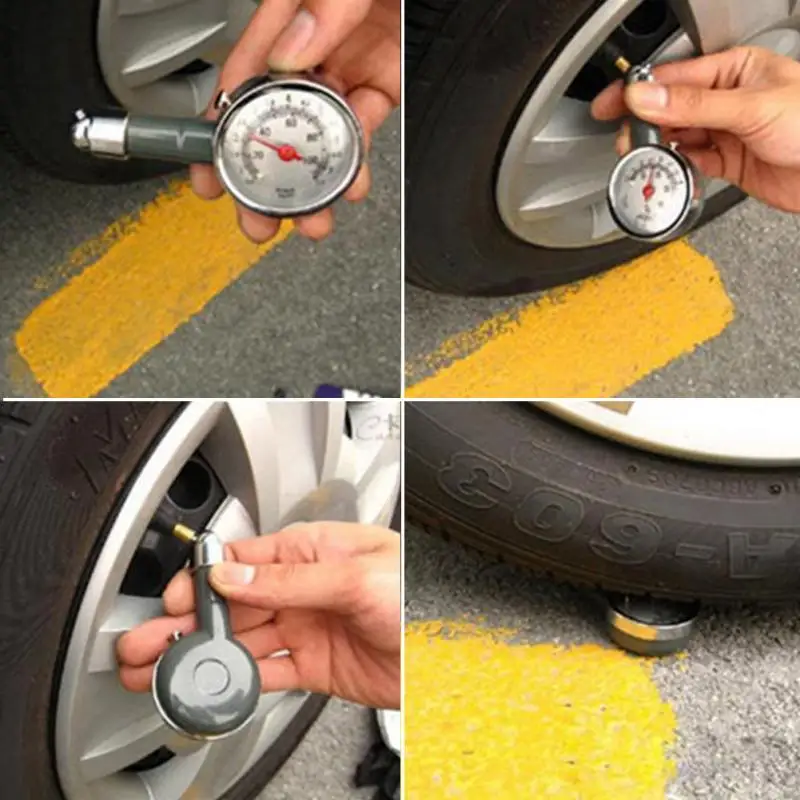
The most dangerous situation is when there are different pressures in different wheels of a car. Yes, some manufacturers allow different pressures in the front and rear wheels, but in pairs, tires on the wheels of the same car axle must still match. If the pressure is not the same everywhere, then the car, when driving, will roll towards the “sagging” wheel - that is, the one where the pressure indicator is the lowest. Such a situation is a reason for technical inspection. If one of the tires loses pressure, it may be damaged. A change in pressure can also be the result of a misaligned wheel rim or a defective spool causing air to leak.
- Risks of insufficient tire pressure
Tires with low internal pressure or, in simple terms, under-inflated tires lose their shape when driving. They become softer, more pliable, and the weight of the car, especially at speed and when cornering, makes them literally sag and sag. What does it threaten?
Uneven wear.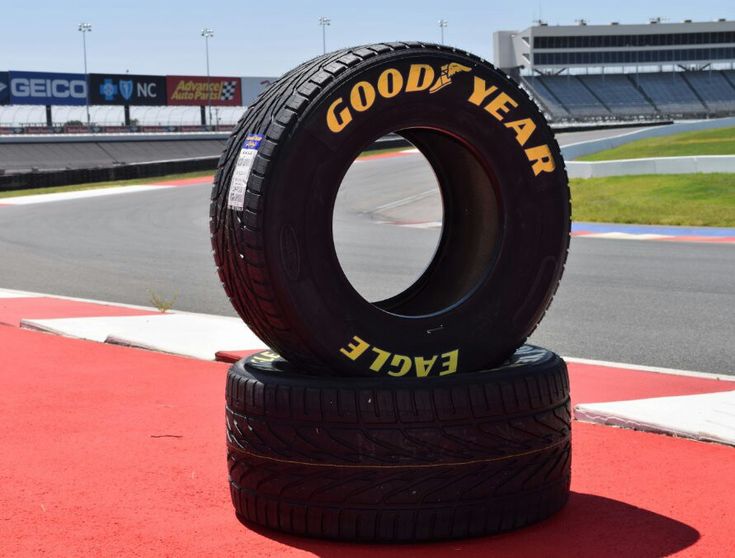 The side treads wear out faster than the middle tread because the tire has more contact with the road due to tire deformation.
The side treads wear out faster than the middle tread because the tire has more contact with the road due to tire deformation.
Rolling resistance increases, which causes the tire to heat up more.
Acceleration time is increased.
Increased fuel consumption.
Threatening the integrity of the tire carcass and its rubber, especially in the side parts, which can lead to sidewall rupture. This can be warned by a worn strip that appears around the entire circumference of the tire - this is evidence of chafing of the cord threads.
Risk of tire dismantling. An under-inflated tire may come off the disc seat.
Tires deformed by long-term use at low inflation pressure become unsuitable for further use. Even if the pressure in them is brought to normal, the risk of rupture in the weakened parts remains. If you want to avoid unnecessary expenses - do not strain the tires.
- Risks of high tire pressure
With increased tire pressure, the part of the tread that should be flat and provide reliable traction becomes convex, literally swells up like a ball. As a result, the contact patch of the tire with the road is much smaller than planned by the manufacturer. Why is it dangerous?
The tread wears unevenly, faster in the middle than on the sides.
Decreased grip and handling.
Due to the reduction in the area of contact between the tire and the road, the braking distance increases.
If the tire pressure is too high, the tire runs the risk of exploding.
Long driving on tires with high pressure overstresses the cords, such a tire will last much less.
The deformed contact patch of the tire with the road interferes with the effective removal of water, as a result, hydroplaning can occur on a wet surface.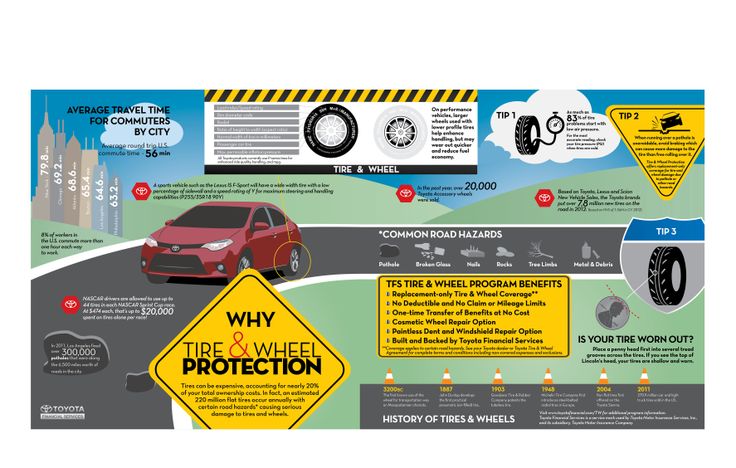
How does tire pressure affect driving safety and comfort?
Sometimes the pressure in the tires still needs to be lowered or increased. It depends on certain driving conditions or the quality of the surface. For a short period of time, this will improve the driving characteristics of the car and driving safety. Of course, everything is within the manufacturer's recommendations, however, even small changes can greatly affect driving comfort.
- Increasing tire strength due to pressure
A slight increase in pressure can slightly raise the "tensile strength" of tires under excessive loads. Yes, overloading the car is bad, but sometimes you have to, especially when the summer season is on the nose. This is especially true for a car with an attached trailer, which increases the load on the rear wheels. Tires at least on the rear axle in this case, it is better to additionally pump up 0.2-0.3 bar. From the additional load, they still “sag” a little.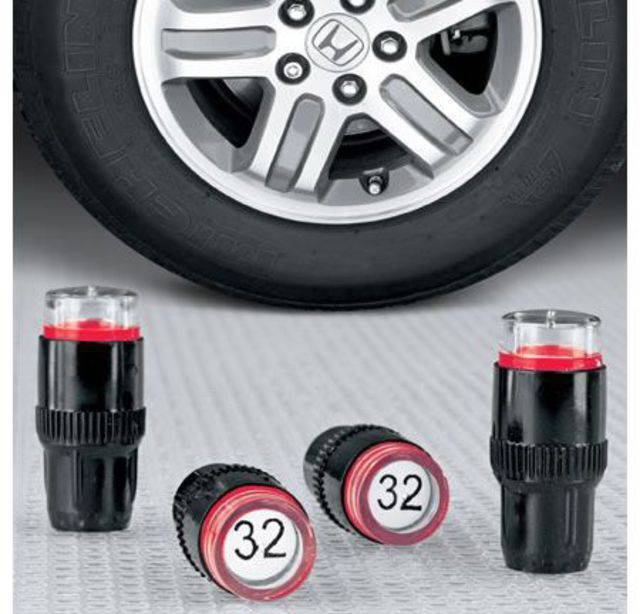
- Tire pressure for highway driving
Long and high-speed races on highways for tires are a strong test. Therefore, even the manufacturers of many cars advise in the operating instructions: before a long trip on a flat road (more than an hour at a speed of 115 km / h), it is better to slightly increase the tire pressure. The increase should be small - 0.2 atmospheres (bar). This recommendation also takes into account the fact that the pressure in the tire itself will increase from the heating of the tire.
- Off-road pressure
Tire pressure adjustment can help you get through difficult terrain. Driving on sand, snow, mud and wet grass will be easier if you lower the tire pressure a little. This maneuver will increase the contact patch of the tire with the surface, increase grip, and the car will be less likely to get stuck and skid. The main thing is to keep a low speed, and when the difficult section is left behind, restore the correct tire pressure again.
- Pressure and fuel economy
There is a myth that when the tire pressure is higher than normal, fuel consumption decreases. It really goes down, but it's not worth it. The savings will be only less than 5%, but driving comfort will drop significantly. The fact is that the tire becomes stiffer under excessive pressure, so that you and your passengers will feel all the bumps and bumps in the road. The point in saving on fuel is also lost because with constant driving on overinflated tires, the tires themselves wear out faster and more likely to require replacement costs.
How does tire pressure depend on temperature?
In winter and summer, the pressure in car tires may differ. This directly depends on the physical properties of the gas with which the tires are inflated. We all remember from school that at high temperatures, gas tends to expand, and at low temperatures, on the contrary, it contracts. Therefore, even if the tires were inflated recently, with temperature changes, this very pressure will change, and noticeably. On average, for every 10ºC, the air pressure in the tires changes by 0.1 bar.
On average, for every 10ºC, the air pressure in the tires changes by 0.1 bar.
- Tire pressure in winter
It is especially difficult to maintain constant tire pressure during cold snaps. Therefore, in the fall, changing summer tires to winter tires, checks must be approached carefully. It should be checked during the first frost and after the temperature drops well below zero. Most likely, the tires will need additional pumping. Keep in mind: in a warm garage or in a closed parking lot, it is difficult to catch the pressure drop in the tires. It will happen when you go out into the cold. Therefore, it is better to check and inflate tires after parking in the open air.
- Tire pressure in summer
Summer tire inflation is recommended to be carried out in a warm spring with a margin for the summer and at the end of summer before changing seasonal tires. However, this does not exempt from checks. The fact is that the warmer it is, the more the air in the tires expands - and the sooner it “comes out” through the chambers.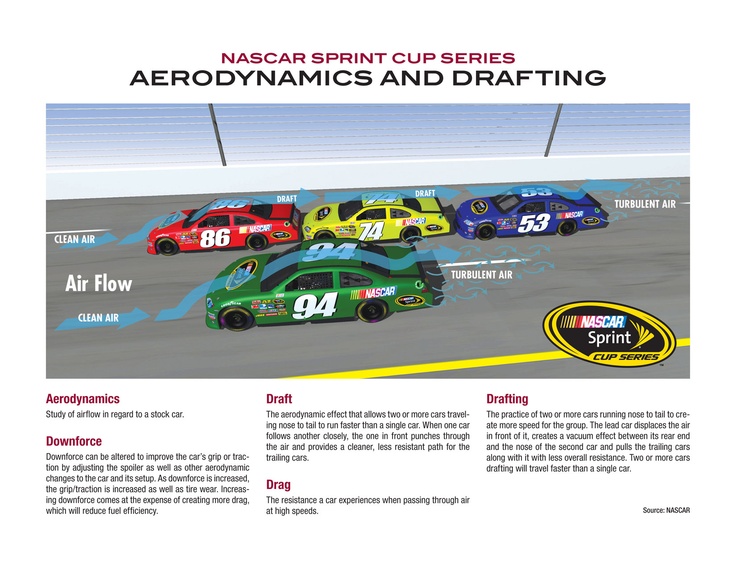 In addition, pressure can drop with even microscopic tire damage, and in summer this happens even faster.
In addition, pressure can drop with even microscopic tire damage, and in summer this happens even faster.
How to check tire pressure?
1. The pressure gauge is your best and indispensable friend in this matter. It can be either portable, up to the size of a key fob, or stationary, installed at a gas station, in a tire fitting room or other specialized car service facilities.
You can buy your own car pressure gauge at any auto parts and accessories store. They are pointer, mechanical or electronic. Not only its price, but also its accuracy depends on the class of the pressure gauge. The pressure gauge is mandatory installed on the compressor for pumping wheels - it is he who allows you to adjust the pumping process and the required amount of air supplied to the tire. But it can also be used separately to determine the existing pressure.
It is easy to check the accuracy of the manometer. Use it immediately after the tire fitting, where you will adjust the inflation pressure in the tire to the desired value, and just check the readings.
2. Automatic tire pressure monitoring systems. For example, premium cars are equipped with direct pressure sensors that are installed directly into the wheel rim. Sensors measure tire pressure and temperature, and the information is sent to the on-board computer. When pressure indicators change, a warning signal is received, or information is displayed on the computer panel in digital and alphabetic form. Similar direct control devices can be purchased and installed separately: pressure control sensors are installed in the wheels, and the receiving device is installed in the passenger compartment.
A similar system is part of the anti-lock braking system (ABS), but it works differently. The ABS system does not measure tire pressure, but wheel speed, and draws conclusions. The fact is that when the pressure decreases, the diameter of the tire changes, and the wheel starts spinning faster in order to “catch up” with the rest. The system captures these changes, checks them against valid values stored in memory, and informs you of the mismatch.
3. Indicator caps are screwed onto the tire valves. These pressure sensors are transparent on top, and this part serves as an indicator: the change in color indicates the current state of the wheels. The obvious disadvantages of such a control system are that it is impossible to evaluate the change in tire pressure during movement with its help; a stop and a visual inspection are necessary.
How often should the tire pressure be checked?
Manufacturers recommend checking tire pressure once a month. But this is the minimum. Of course, under extreme operating conditions and sudden changes in temperature, it is not worth the risk and you need to check more often. And before a long journey or planned loads, checking the internal pressure in the tire is completely mandatory, even if it is extraordinary.
Important: pressure measurement is carried out only on cold tires - that is, those that have remained without movement for at least 5 hours.
5 most important findings
1. Tire pressure affects ride comfort, vehicle handling and your own safety.
2. Under-inflated tires wear out faster, can burst at the side and heat up much faster when driving. With prolonged use of tires with reduced pressure, tires are completely deformed so that they can no longer be restored.
3. Overinflated tires lose reliable grip, and the car loses controllability. In addition, when driving on overinflated tires, the braking distance is greatly increased, and each bump becomes more noticeable.
4. Check tire pressure at least once a month, and definitely before every long trip. A pressure gauge or automatic tire pressure monitoring systems will help with this. The pressure check is carried out on "cold" tires that have not been on the move for at least 5 hours. Temperature fluctuations, frosts, long trips in the summer and overheating of tires are an extra and important reason to double-check tire pressure.
5. Small changes in tire pressure can help you with excessive loads or off-road. But such changes should be short-term, after which the pressure must be restored to the norm recommended by the manufacturer.
This content was written by a visitor and has been rewarded.
There are hardly many people reading this resource who have a longer view of F1 racing.
My first acquaintance took place... in 1986. This was the first and at that time the only stage of the formula taking place in a socialist country. Yes, yes, after the failure of the stage in Moscow, Hungary became the first country of "victorious socialism" to adopt "alien to the ideology of socialism, the race of capitalism." And this stage was broadcast in the USSR. I can’t even convey with what eyes I looked at it, absolutely not understanding what was actually happening there. Moreover, the parents, who started wallpapering, interfered . . It was then that I realized: this is it, the very thing ... The fireballs flashing on the screen and squealing with engines left an indelible impression in the mind of the child ...
. It was then that I realized: this is it, the very thing ... The fireballs flashing on the screen and squealing with engines left an indelible impression in the mind of the child ...
Then won Nelson Piquet on Williams.
But I returned to watching F1 races on a permanent basis much later, when they became regular broadcasts, in 1992. Then, with a huge margin, simply defeating everyone, Nigel Mansell (Nigel Ernest James Mansell), who played for Williams (Williams - Renault), won.
Mansell was simply unstoppable then. Nearby, on the podium on the right, a young talent...
recommendations
My heart was given forever to a completely different team that barely took fourth place in the constructors' championship - the legendary Ferrari...
Neither Jean Alesi nor Ivan Capelli could compete for victories at that time.
This went on until the "forever cursed" hybrid broke into the world of F1 . .. I lost almost complete interest in the series. I stopped watching them regularly. I followed the results, but without much enthusiasm. He considered the transition to hybrid engines to be simply stupid, because the races themselves, well, could not significantly affect the global ecology in any way. In addition, the rules of the races themselves were changed quite a lot, and I didn’t like that at all either. Attempts to limit the budget of the teams and the desire to equalize the chances of winning did not lead to anything (in fact, those who follow F1 are aware of who and how won in recent years). But the almost ban on the creation of new engines, in my opinion, put an end to the hope of the teams to defeat Mercedes (I’ll talk about the 2021 season later). As a result, the race, designed to embody progress and the highest achievements in motorsport, is artificially slowed down. It didn't affect the leveling of the teams in any way (just look at their capabilities and budgets), but it made racing less interesting for me personally.
.. I lost almost complete interest in the series. I stopped watching them regularly. I followed the results, but without much enthusiasm. He considered the transition to hybrid engines to be simply stupid, because the races themselves, well, could not significantly affect the global ecology in any way. In addition, the rules of the races themselves were changed quite a lot, and I didn’t like that at all either. Attempts to limit the budget of the teams and the desire to equalize the chances of winning did not lead to anything (in fact, those who follow F1 are aware of who and how won in recent years). But the almost ban on the creation of new engines, in my opinion, put an end to the hope of the teams to defeat Mercedes (I’ll talk about the 2021 season later). As a result, the race, designed to embody progress and the highest achievements in motorsport, is artificially slowed down. It didn't affect the leveling of the teams in any way (just look at their capabilities and budgets), but it made racing less interesting for me personally.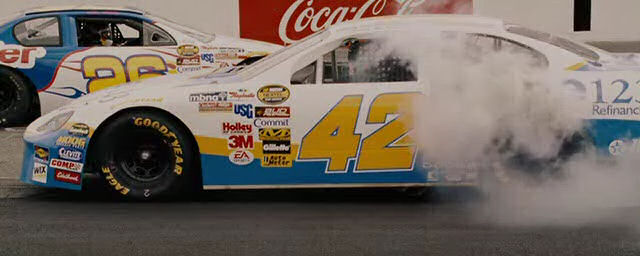
But three years ago, quite by accident, I discovered a series of American races NASCAR (National Association of Stock Car Auto Racing). Of course, I knew about them, read about pilots, cars. But I didn't look. And then such an opportunity turned up. In the beginning, it was completely incomprehensible. Actually, as in the distant 1986. But gradually I began to understand commands, rules and other tricks. And NASCAR appeared to me in a completely different light! Yes, it is much easier technically. Yes, the tracks are not very different in configuration (compared to the tracks under F1).
Typical oval track. Although there are road routes that are more familiar to Europeans.
Despite this, the races were much more interesting. Even the rules that break the race into three stages (stage), almost leveling all the advantage of the leader, have become clearer to me. This is always bad for the first in the race, but good for his pursuers.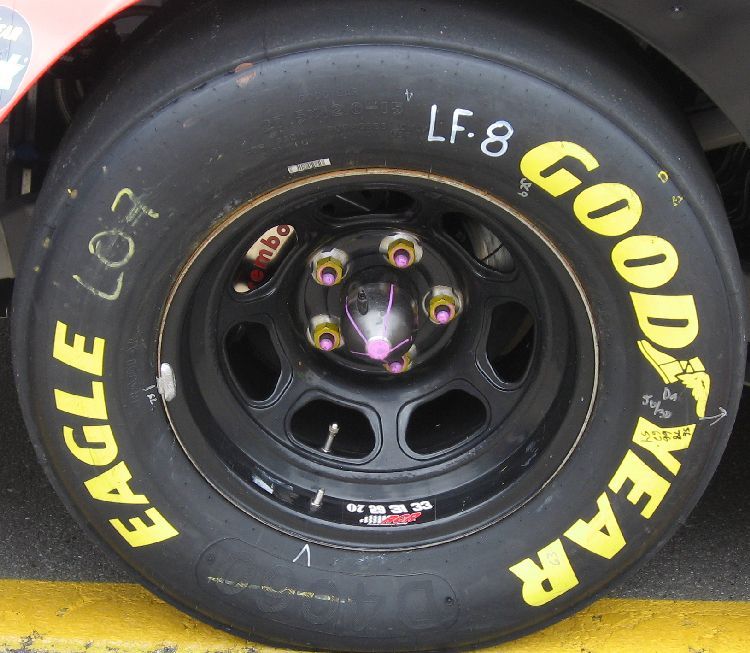
The racing technique itself is much simpler and has a number of features. Externally, the cars copy in general terms the production cars sold in America. At the moment there are only three models: Toyota Camry (Toyota Camry), Ford Mustang (Ford Mustang) and Chevrolet Camaro (Chevrolet Camaro).
Chevrolet Camaro, has a very remote resemblance to a civilian car.
In fact, cars have much more than the so-called "silhouettes" (silhouette). Such, for example, were the race cars of the DTM (Deutsche Tourenwagen Masters) series.
Mercedes, AMG, DTM... Those in the know will understand...
In addition, the specifics of oval races (about a little more than half of all races in the series) forced cars to be made ... curved, or rather asymmetric. This allows you to take turns at a higher speed (after all, turns are always only in one direction - left) In addition, due to the slope of the track in turns (banking), the settings of the left and right parts of the car are different, both in suspension height and tire pressure .
Banking on some tracks is very high (sometimes over 30 degrees)
All this makes the car "crooked". The motors are quite primitive by today's standards and, moreover, they had an ordinary gearbox in addition! No sequentals and steering wheel switches! Only time-tested "poker". But all this is nonsense, because the races themselves are exciting. You just need to understand them.
The fight on the oval tracks is literally centimeters apart.
Any negligence can instantly lead to a mass accident:
Sometimes, unfortunately, people die in it...
And in 2021, I returned to watching F1 again. And had a great opportunity to compare it with the NASCAR series. Everything was very clear in the Formula: the leader of Mercedes (Mercedes - AMG Petronas Formula One Team) and its driver - Lewis Hamilton (Lewis Carl Davidson Hamilton).
Ham himself.
Teammate Valtteri "Vale" Bottas can compete with him
Cheerful Finn Bottas
and Red Bull Racing representative Max Verstappen.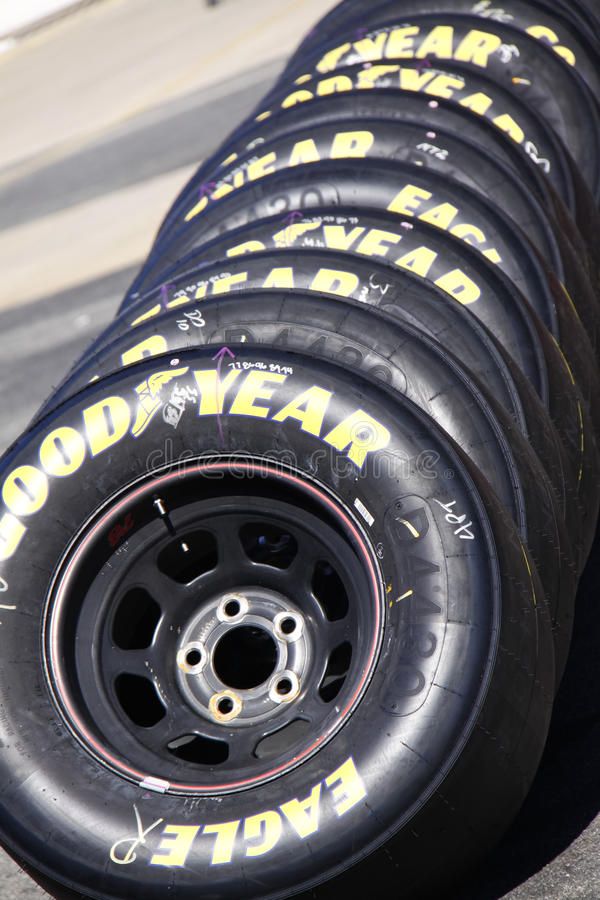
A new hope for all Dutch people.
In NASCAR, there was no such unambiguity, last year's champion Chase Elliott (William Clyde Elliott II) was the formal leader.
But a whole cohort of pilots could challenge his leadership. Even the leadership of the champion team itself, Hendrick Motorsports Racing Team, was not so clear.
And so, during the season, the following situation began to take shape. In F1, Hamilton and Verstappen alternately took the lead. And in NASCAR, Kyle Larson gradually broke away from the rest, having missed the 2020 season due to idiotic "tolerance".
One stupid line in 2020 nearly cost Kyle his career.
But being a leader in NASCAR doesn't guarantee anything at all. The principle of building the cup itself is such that any of the four strongest pilots can become the winner in the final race! Here, for understanding, the analogy with the World (European) Football Championship is similar, where there are qualifying matches, a quarter-final, a semi-final and the final itself. This is how NASCAR works: after the main part of the championship, the points leaders are eliminated to the next round. The rest of the riders also participate in races, but they can no longer claim the championship.
This is how NASCAR works: after the main part of the championship, the points leaders are eliminated to the next round. The rest of the riders also participate in races, but they can no longer claim the championship.
So what did I not like about F1 again? Much. For example, I realized that until the rules are changed, the leadership of Mercedes (in terms of cars) will be undeniable. It may be objected to me that in the days of the “Red Baron”, Ferrari was just like all the thugs and the victories of Michael Schumacher (Michael Schumacher) became boring.
Great racer. Just a legend...
But, there is one "but". The other team was not forbidden to create a new car right in the middle of the championship. Or make a new motor instead of the current one. Now this is not possible due to the rules. You can only do certain "manipulations", nothing more.
Further, the interpretation of the rules in the 2021 season gave a few failures (my personal subjective opinion).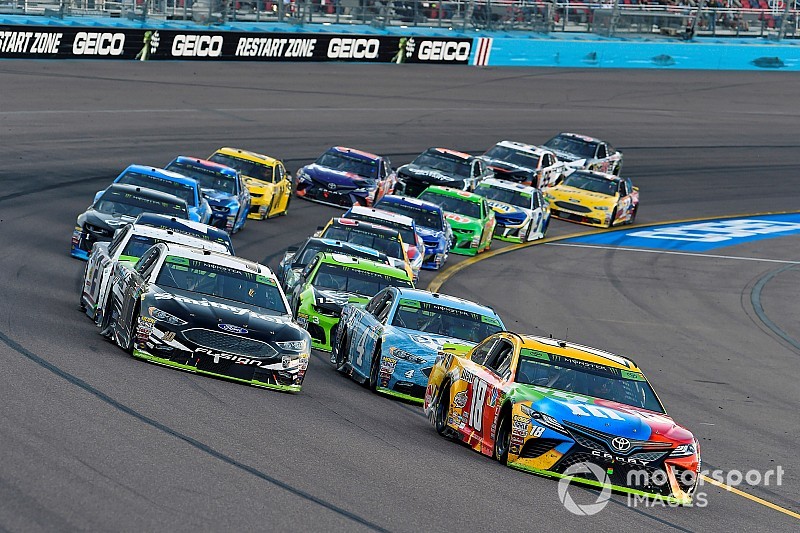
The first, simply ugly incident occurred at the Belgian Grand Prix, on the legendary Spa circuit (Circuit de Spa-Francorchamps). What is so terrible happened there? Nothing. Nothing at all! There was no racing! Formally, she followed the safety car for several laps, and that was it...
In the race, this Mercedes was "leading" for all two laps...
People waited in the rain for several hours, but it never resumed. Well, there is no way to drive in a heavy downpour, cancel the stage (but you need to return the money) or reschedule it. I can imagine the indignation of those who bought tickets for that Grand Prix! Get wet, get wet in the mud and get nothing in return! Not the F1 I was expecting...
In NASCAR, such things are solved more simply: the race is stopped (even light rain on oval tracks with their breakneck speeds is deadly). If the rain stops, the track is dried and the race continues.
This is how they dry the track in America.
If they do not fit into the time limits, they can be rescheduled for another day (which actually happened more than once last year).
Well, "cherry on the cake" - the finals in both championships.
In NASCAR there was a battle between several pilots, but Kyle Larson won, absolutely deservedly, proving that at the moment he is not only the strongest, but also quite a versatile driver.
But the result in F1 was decided not on the track...
I can't stand the sleek Englishman Hamilton, but he would win the championship again. If there hadn't been an accident in the last laps that turned everything upside down. After the restart, using fresh tires, Verstappen simply pulled out the lead in the last laps with his teeth.
But the very interpretation of stopping the race and its resumption was very controversial. Mercedes was clearly unhappy with this. And their leader Toto Wolff (Torger Christian "Toto" Wolff) did not hide his emotions at all and was furious.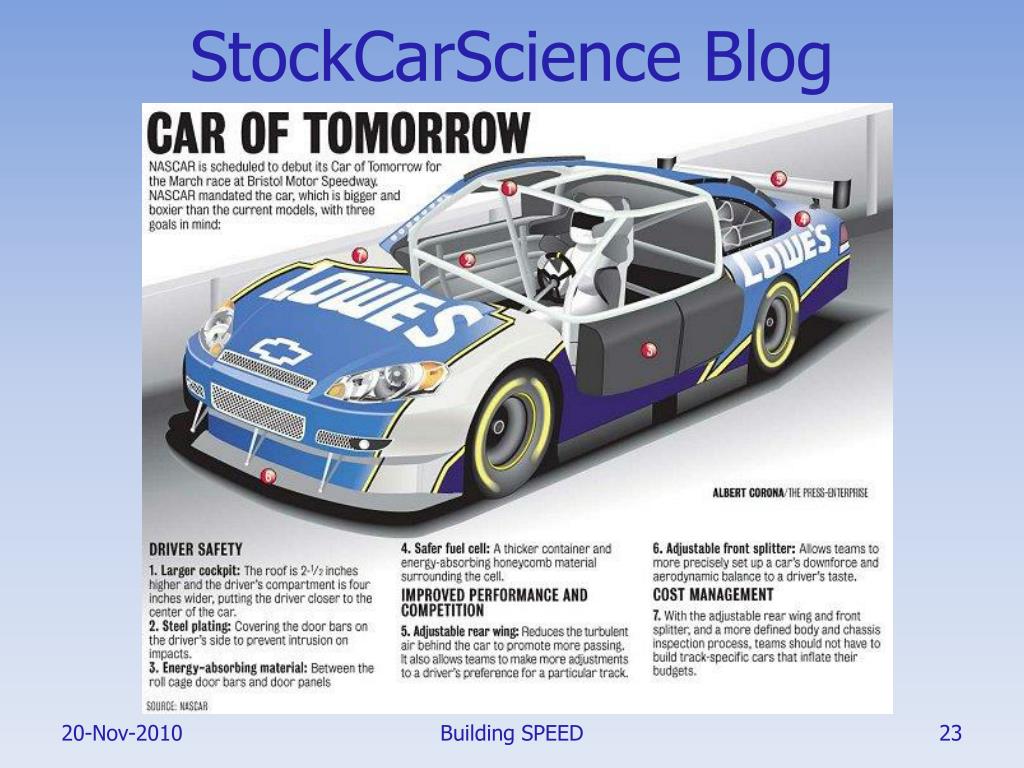
Again, the rules failed. It’s not good to interfere in the fight like that, especially for the championship. Then there were "undercover trials", Mercedes did not file a protest, but we'll see what the dissatisfaction will result in this season...
"Undercover fight" in NASCAR is many times less. There is a different level of teams, their budgets. And the traditions are completely different. Do you remember what resulted in Verstappen's natural collision with Hamilton in Monza (Autodromo Nazionale di Monza)?
The situation was unpleasant. But Max also behaved badly, not finding out the state of Lewis.
Nothing. It's just that their dislike for each other has intensified. But NASCAR racers are not shy and can clean each other's faces. This happened quite often.
The 2022 seasons will bring major changes to the regulations of both championships. The F1 will finally switch to larger diameter tires and make some pretty significant changes to the aerodynamics.
First car of the 2022 season. Haas F1 Team. Virtual...
In general, there was a "revolution" in NASCAR: the cars received new bodies, which are now symmetrical (carbon!). The diameter of the disks will also change and the gearboxes (sequentials!). Well, aerodynamics, of course.
It is useless to build a forecast for this series: there are many strong pilots. And which of the teams adapts better to the new rules is not clear. Future will tell.
In F1, by and large, nothing will change. Hamilton will be the formal leader. Whether Verstappen will be able to impose a fight on him depends heavily on the work of the mechanics of Honda (Honda), which is retiring from racing.